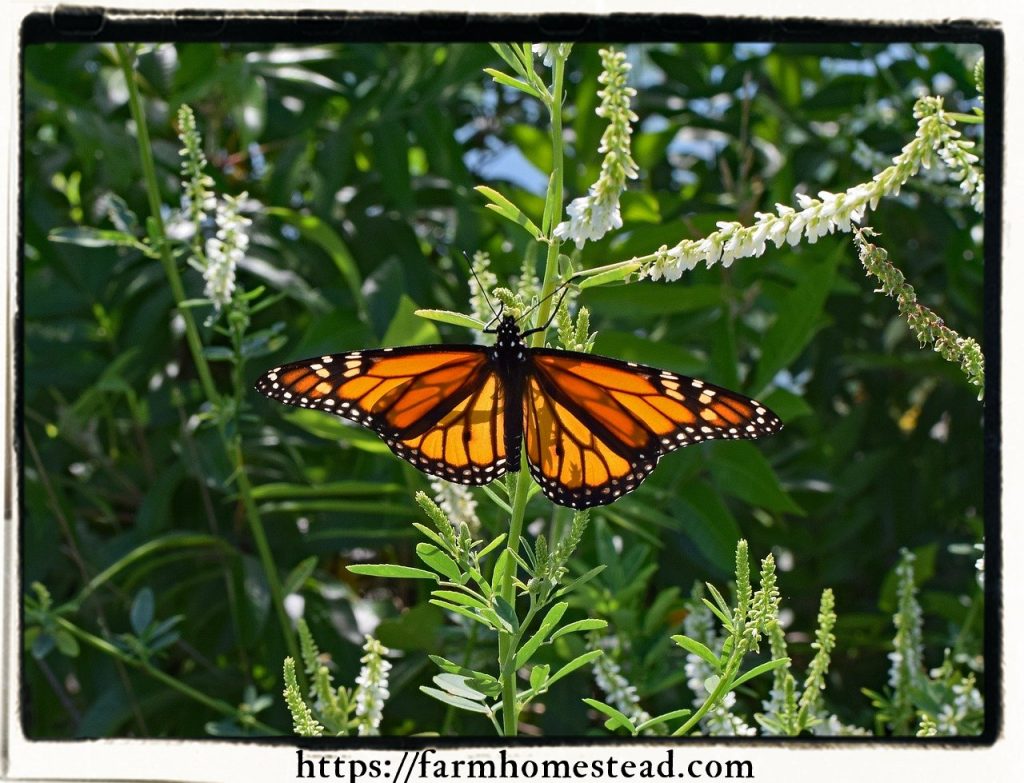Sweet clovers (both white and yellow) are excellent soil-builders because they have a deep taproot that extends through the soil profile which takes up nutrients and minerals that can be used by crops.
What is the difference between white (Melilotus alba) and yellow (Melilotus officinalis) sweet clovers?
Table of Contents
The biennial yellow sweet clover takes two years to produce a flowering plant. The first year, the yellow sweet clover grows in a rosette. After a vernalisation period it produces a shoot and flowers. It can produce up to 2.5 tons of dry matter and can grow up to 24 inches. If conditions are favorable, it can reach up to 8 feet in the second year. Below ground, its tap root can extend down 5 feet by the end of spring. White clover does not produce as much biomass as yellow. It is taller and stemmier plant that is better for soil building.
White Sweetclover is more commonly grown as an beneficial crop because bees and other pollinators are quite fond of the blossoms. It matures about two weeks later than Yellow Sweetclover. It is also grown as nitrogen producing green manure crop. Sweet clover has a poor feed value and is not recommended for livestock feed or forage.
The Michigan State University Extension states…
Sweet clover has historically been used for grazing or as an emergency feed. But Kim Cassida, Michigan State University Extension forage specialist does not recommend it because it can be toxic to livestock. “The toxic factor is dicumarol, which is formed from coumarin only when the sweet clover is spoiled by certain kinds of mold. Poisoning is more likely from hay than from silage/haylage and it has been reported in cattle, sheep, pigs and horses. Poisoning has occasionally occurred while grazing. Sweet clover forage does not have to be visibly moldy to be toxic. Most varieties of sweet clover hay, haylage and silage should only be fed with great caution and when no other options are available. A few varieties of yellow (‘Norgold’) and white (‘Cumino,’ ‘Denta,’ ‘Polara’) sweet clover have been bred for low coumarin content and thus safer forage use, but these varieties are not as widely available as those typically used as cover crops.” The Merck Veterinary Manual sweet clover entry is a good source of details on sweet clover poisoning.
Winter hardy, best for fall sowing.
Requirements
Soil: Heavy loams
Climate: All but tropical
Planting
Per acre: 15 pounds
Per 1000 square feet: 1/2 pound
Seed Depth: 1/2 inch
Season
Sow: Any time
Turn under: Any time

See Also…
“The earth neither grows old or wears out if it is dunged.”
~ Columella, circa 45 A.D.










1 thought on “White Sweet Clover”